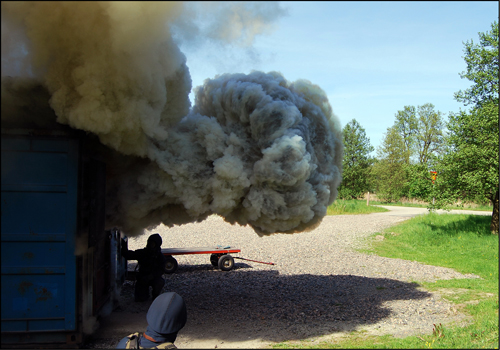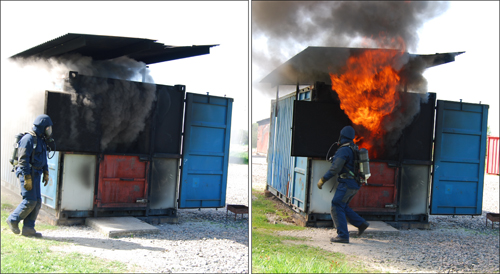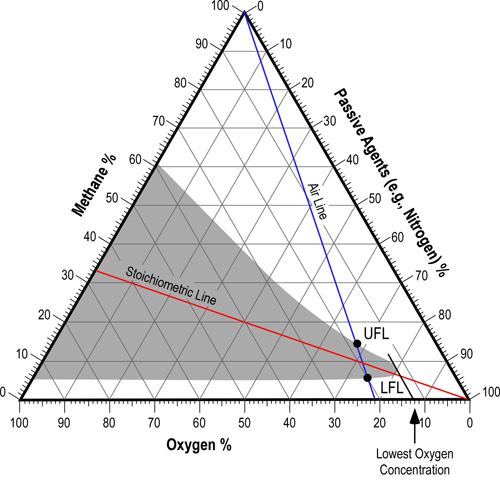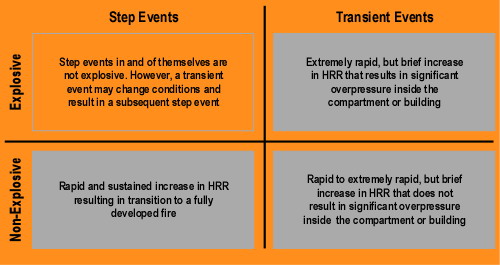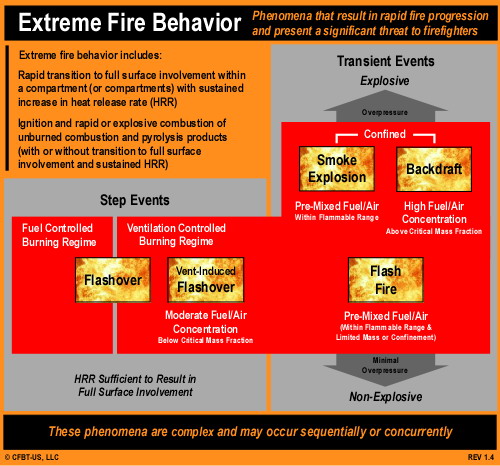Culture of Safety or Culture of Extinguishment
Thursday, April 30th, 2009I had intended to write today’s post simply about the IFE Compartment Firefighting Special Interest Group in Sydney, Australia. However, the recent keynote presentation at the Fire Department Instructors Conference (FDIC) by FDNY Lieutenant Ray McCormack claiming the fire service needs a “culture of extinguishment not safety” cannot pass without comment.
I wonder how much of the commentary on the web is based on quotations pulled from LT McCormack’s Keynote Presentation or simply extension of comments by others. If you want to know what he said, listen to his entire presentation.
Too Much Safety
I disagree with much, but not all of what LT McCormack had to say. One of the memorable quotes from this speech is “Too much safety makes Johnny a poor leader and a terrible rescuer.” What does this really mean?
I believe that LT McCormack cares deeply about the firefighters and fire officers he works with and does not want to see them injured or killed. However, he recognizes that there the fireground presents inherent hazards. Completely eliminating firefighter injuries and fatalities on the fireground would require that we not go to fires. On this point, LT McCormack and I are in agreement.
LT McCormack indicates that safety should come from proficiency in the craft of firefighting. On this point I substantively agree, but suspect that the LT and I would disagree on the full range of knowledge, skills, and work practices that should be included. For example, while the LT poked fun at air management, I believe that working effectively while maintaining respiratory protection is a fundamental component of effective and skillful firefighting.
Learning from Experience
Introducing the LT, Chief Bobby Halton stated that “Experience without reflection or evaluation is simply interesting”. Reading the stories of firefighters who have died in the line of duty while fighting fires inside burning buildings, I find that the common elements are frequently the same. In some cases, firefighters die because they over extended themselves in attempting to rescue a civilian occupant. However, in other cases they died because they did not recognize and control the hazards presented by the situation.
We tend to be reactionary, making policies, rules, and procedures based on prior bad outcomes. However, this practice often fails to address the root cause of the problem. I believe that the concept of two-in/two-out is sound and providing a rapid intervention team (RIT) when firefighters are in a hazardous environment is a solid idea. However, it does not address the root causes of firefighters becoming lost or trapped inside burning buildings. Does this mean that having a RIT is too much safety? I think not. However, failing to ensure firefighters’ knowledge of fire behavior and building construction is too little safety! Safety is not simply about policies, programs, and procedures; it must be integrated into our work practices. This is not to say that we do not need policies, programs, and procedures, but they must be sound and integrated with skillful and effective work practices.
LT McCormack undoubtedly recognizes that some civilian occupants lose their lives before the fire department arrives and is not advocating extension of search into areas of the building that contain a fully developed fire. The major question is where to draw the line between offensive and defensive operations. How much risk is acceptable to save a savable life, how much risk is acceptable to save savable property? This is a question that each fire department, each fire officer, and each firefighter needs to answer.
Trapped or dead firefighters do not save civilian occupants or property. Firefighters working to save their comrades likewise do not save civilian occupants or property. Working safely allows everyone on the fireground to contribute to our purpose of being there. Too much safety is not the problem.
Identity and Values
LT McCormack states that an emphasis on safety is based on fear and results in firefighters risking loss of their identity as firefighters and the values of courage, determination, and pride. On these points I disagree.
There is a difference between fear and understanding the hazards presented on the fireground. There is a difference between unthinking reaction and well though and skillful tactical action. The values of courage, determination, and pride apply equally to service to our citizens and service to our members. Sometimes it is necessary to say, no, the risk is too great. I suspect that in some of these situations the LT and I would agree and in others we would not. That is the challenge.
Culture of Extinguishment
LT McCormack states “We do not need a culture of safety; we need a culture of extinguishment… If we put out the fire, safety is accomplished for everyone on the fireground”. This is absolutely correct. However, I suspect that the LT and I might disagree about the application of this important concept or how it should be supported.
- Effective risk management results in saving savable lives while not compromising the safety of firefighters.
- Search supported by effective fire control and tactical ventilation is more likely to succeed than search that is not.
- In some cases firefighters should take the fire first, rather than focusing on primary search (as controlling the fire will eliminate the threat to both firefighters and occupants).
At the start of his presentation, LT McCormack stated “my name is Ray and I like to go to fires”. Much of what we do is driven by our identity as firefighters and the fact that we enjoy our work. While selfless sacrifice for others is honorable, sacrifice because of thoughtless action or ignorance is simply tragic.
“Too much safety makes Johnny a poor leader and a terrible rescuer”. I disagree. Safe performance makes Johnny a good leader and an effective rescuer.
Take 30 minutes and listen to LT McCormack’s presentation and give some thought to how you view safety and effective fireground performance.
Ed Hartin, MS, EFO, MIFireE, CFO






